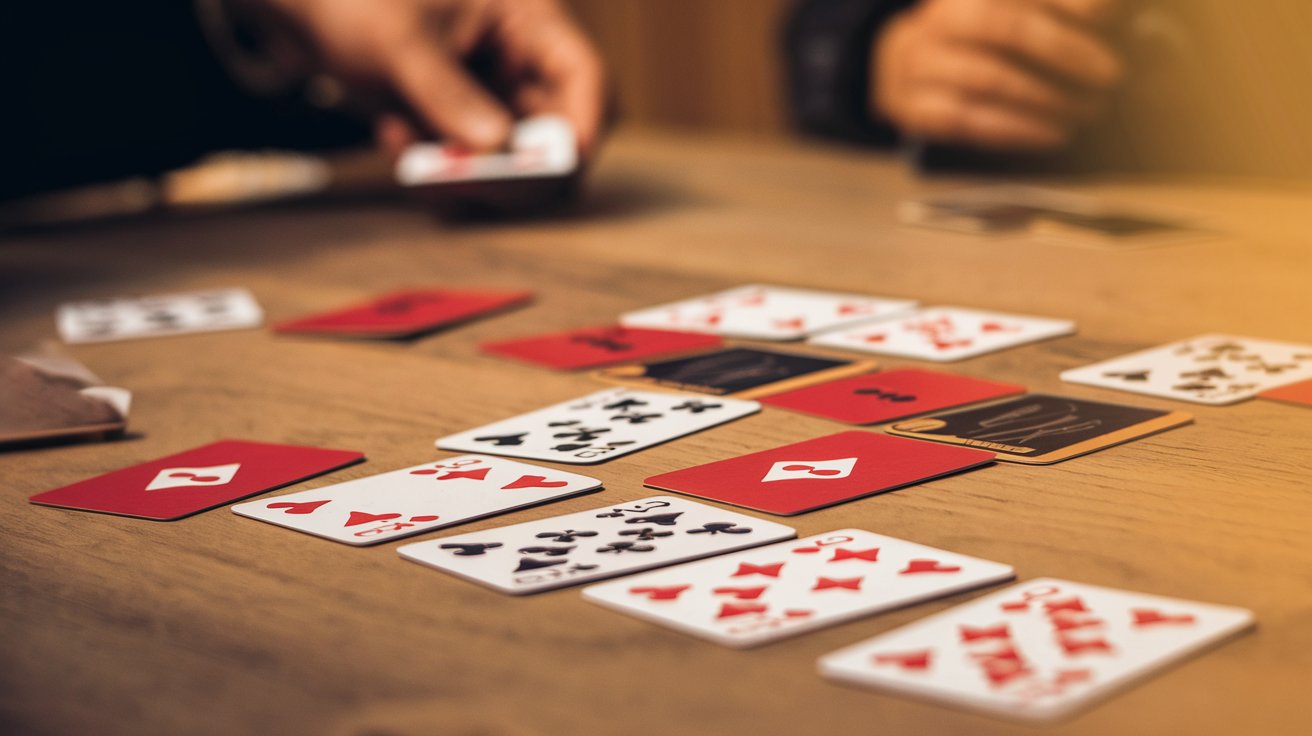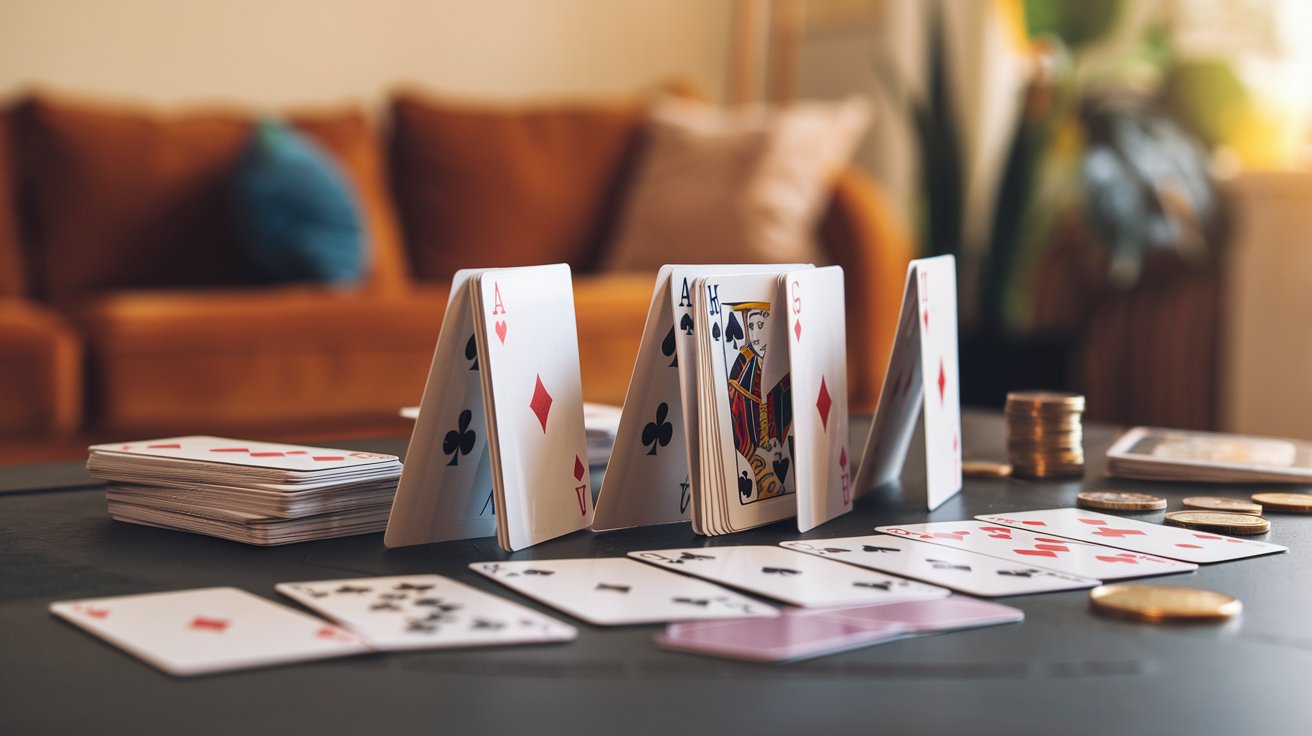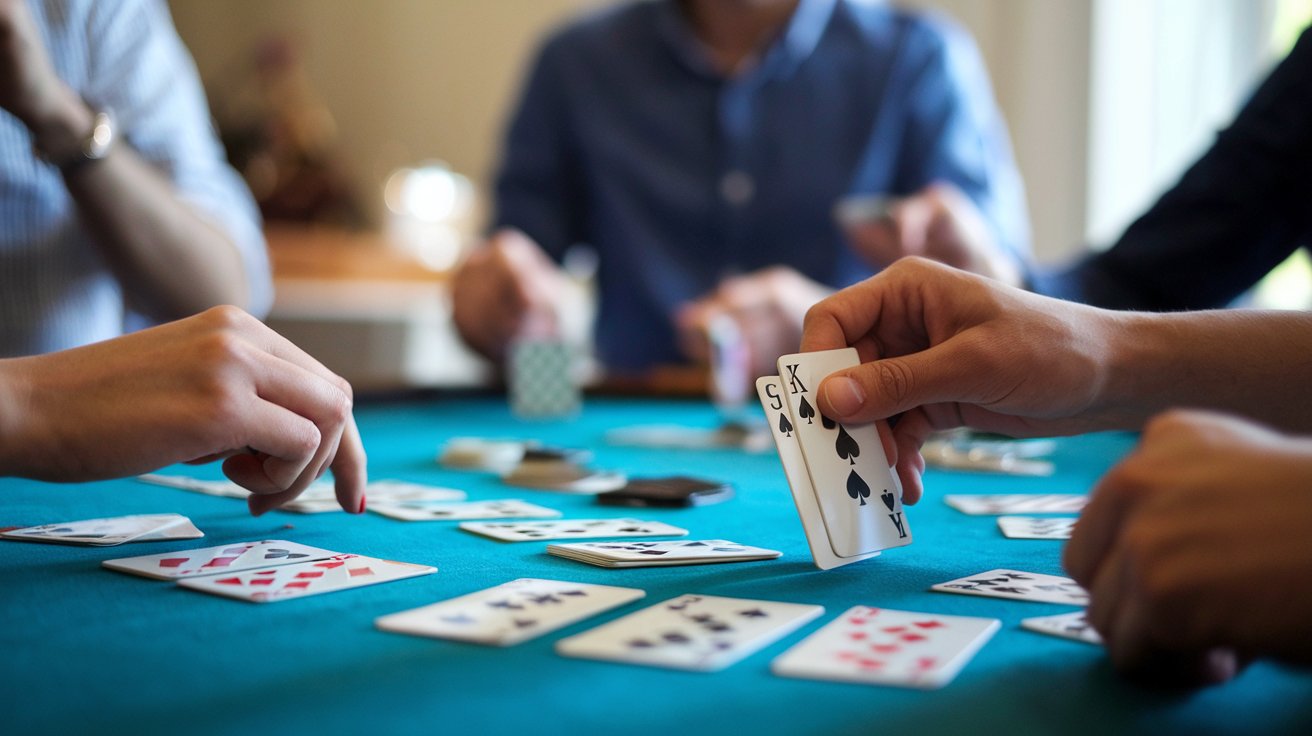In the world of card games, few combine the perfect balance of skill and chance quite like Rummy. Whether you’re playing classic Gin Rummy, Indian Rummy, or one of the many regional variants, your opening strategy sets the tone for the entire game. While many players focus on dramatic finishes, experienced Rummy enthusiasts know that games are often won in those critical first few moves.
In this comprehensive guide, we’ll explore the most effective opening strategies in Rummy that can dramatically improve your win rate. From initial card evaluation to planning your first discard, these insights will transform how you approach the early game.
Understanding the Importance of Opening Moves in Rummy

Before diving into specific strategies, it’s essential to understand why opening moves matter so much in Rummy:
- Setting Your Direction: Your opening hand guides whether you’ll pursue sequences (runs) or sets (groups of same-value cards).
- Efficiency: Starting with a focused strategy reduces wasted moves and minimizes dead cards.
- Psychological Advantage: A strong opening puts pressure on opponents and may force them into defensive play.
- Card Flow Management: Early decisions determine which cards you’ll target throughout the game.
Now, let’s dive into the strategies that can give you an edge from the very beginning.
Initial Hand Evaluation: The Foundation of Your Strategy
Assessing Card Distribution
The first and perhaps most crucial step in any Rummy game is evaluating your initial hand. Here’s how to quickly analyze what you’re working with:
Look for Natural Connections
Scan your cards for:
- Adjacent Cards: Cards in sequence of the same suit (like 5♥, 6♥, 7♥)
- Same-Value Cards: Sets forming across different suits (like 8♠, 8♥, 8♦)
- Near Connections: Cards with one-card gaps (like 3♣, 5♣) that could form sequences with a single draw
Evaluate Card Proximity
A common mistake among beginners is failing to recognize the potential of “close” cards. For example, a 4-6-7 of hearts isn’t a sequence yet, but it’s just one card (5♥) away from becoming a valuable run.
The Point-Value Assessment Method
Many expert Rummy players use a point-based system to evaluate their opening hand:
- Connected Cards: Assign 2 points for each card that directly connects with another card in your hand.
- One-Gap Cards: Assign 1 point for cards that have a one-card gap between them.
- High Cards (K, Q, J): Subtract 1 point unless they form part of a potential sequence or set.
- Jokers/Wildcards: Add 3 points for each (if your variant uses them).
A score of 10+ points typically indicates a promising opening hand.
Strategic Decision: Sets vs. Sequences

One of the most important opening decisions is whether to prioritize building sets or sequences.
When to Prioritize Sequences
Focus on sequences when:
- You have multiple cards of the same suit in proximity
- You hold consecutive or near-consecutive cards
- Your hand contains more low and middle-value cards
- You’re playing a variant where sequences score higher
For example, if you have 5♥, 6♥, 8♥, 9♥, you have strong potential for sequences in hearts.
When to Prioritize Sets
Prioritize sets when:
- You already have pairs or triplets of the same value
- Your hand contains disconnected cards across different suits
- High-value cards dominate your hand
- You’re playing a variant where sets are easier to form
If you hold cards like 7♠, 7♥, 7♦, the natural direction is to pursue sets.
The Hybrid Approach
In many cases, the strongest opening involves pursuing both sets and sequences simultaneously. This flexible strategy lets you adapt based on what you draw and what opponents discard.
For example, with a hand containing 4♠, 5♠, 6♠, 6♣, 6♥, you have the foundation for both a sequence in spades and a set of sixes.
First Discard Strategy: Which Card to Let Go?

Your first discard is a critical decision that communicates information to opponents while setting your direction.
High-Value Isolated Cards
The safest opening discard is usually a high-value card (typically face cards or tens) that doesn’t connect with anything else in your hand. These cards:
- Carry high penalty points if you’re caught with them
- Are less likely to form useful combinations quickly
- Reduce the risk of giving opponents exactly what they need
For example, if you have a King of clubs that doesn’t connect with any other clubs and you have no other Kings, it’s usually a prime candidate for your first discard.
The “Duplicate Distance” Tactic
If you have cards of the same value in different suits, and one is more isolated from potential sequences than the other, discard the more isolated one.
For example, if you hold 8♠, 8♥, 6♥, 7♥, 9♥, the 8♠ is isolated while the 8♥ forms part of a potential heart sequence. The 8♠ is the better discard.
Middle Card Strategy
Sometimes discarding a middle card from a loose sequence creates two distinct drawing opportunities.
For instance, if you have 3♦, 5♦, 7♦, discarding the 5♦ means you could form a sequence by drawing either a 4♦ and 6♦, or by drawing a 2♦ or 8♦.
What NOT to Discard First
Generally avoid discarding:
- Cards that are part of a potential set or sequence
- Middle cards from a sequence (unless using the strategy above)
- Cards that are adjacent to others in your hand
- Jokers or wildcards (in variants that use them)
Observing First Discards: Reading Your Opponents
While managing your own cards is important, Rummy success also depends on reading what opponents are pursuing based on their discards.
First Discard Indicators
When an opponent makes their first discard:
- Face cards/high-value cards: They’re likely pursuing sequences or already have pairs.
- Middle-value cards: They may have high cards they’re keeping for sets.
- Suited numbered cards: They’re probably not collecting that suit.
For example, if your opponent discards a 7♥, they’re likely not building heart sequences in that range.
Adaptive Drawing Strategy
Once you observe these patterns, adapt your drawing strategy:
- Avoid drawing cards that multiple opponents have discarded (dead cards)
- Consider pursuing suits that opponents are clearly avoiding
- Draw from the discard pile strategically when it benefits your existing combinations
Opening Move Variants for Different Rummy Games
Different Rummy variants require slightly adjusted opening strategies:
Gin Rummy Opening Moves
In Gin Rummy, where the goal is to minimize deadwood (unmatched cards):
- Be more aggressive about discarding high-value cards
- Prioritize sets slightly over sequences early on
- Pay close attention to opponent discards, as the smaller deck makes card tracking easier
Indian Rummy Opening Strategy
With its mandatory pure sequence requirement:
- Immediately evaluate potential for pure sequences (without jokers)
- Prioritize cards that could form part of this mandatory element
- Be more willing to discard high-value cards that don’t contribute to sequences
Rummy 500 First Moves
Since Rummy 500 allows playing combinations immediately:
- Look for quick-play opportunities in your opening hand
- Be ready to pick up from the discard pile more aggressively
- Consider holding a stronger hand before making your first meld
Advanced Opening Techniques for Experienced Players
Once you’ve mastered the basics, consider these advanced opening strategies:
The “Split Decision” Technique
Sometimes the strongest opening move is to mentally “split” your hand into two distinct directions. For example, with a hand like 2♠, 3♠, 4♠, 8♥, 8♣, 8♦, Jack♣, Queen♣:
- Group 1: 2♠, 3♠, 4♠ (spade sequence)
- Group 2: 8♥, 8♣, a 8♦ (set of eights)
- Group 3: Jack♣, Queen♣ (potential club sequence)
This mental organization helps you make quicker decisions about draws and discards.
The “False Signal” Discard
In competitive play, occasionally discarding a card that seems valuable can mislead opponents about your strategy. For instance, discarding a 7♥ when you hold 6♥ and 8♥ might make opponents think you’re not pursuing heart sequences.
This is a high-risk strategy best used sparingly and by experienced players.
The “Quick Drop” Strategy
In games where ending quickly is advantageous, identify the fastest path to meeting minimum meld requirements. This might mean focusing exclusively on your strongest potential combinations and immediately discarding anything that doesn’t contribute to that goal.
Common Opening Move Mistakes to Avoid
Even experienced Rummy players sometimes make these opening errors:
1. Holding Too Many High Cards
Keeping too many face cards in hopes of forming sets often leads to high penalty points if you get caught with them.
2. Splitting Focus Too Broadly
Trying to pursue too many different sequences or sets simultaneously often results in a fragmented hand with no complete combinations.
3. Ignoring Opponent Discards
Failing to pay attention to what cards opponents discard in the opening rounds means missing valuable information.
4. Over-Committing to a Strategy
Being too rigid about your initial strategy can backfire if your draws don’t support it. Remain flexible.
5. Discarding Cards with Multiple Potential
Sometimes a card that seems expendable actually has multiple ways it could help your hand. Before discarding, always check if a card might contribute to either a set or sequence.
Putting It All Together: A Sample Opening Analysis
Let’s analyze a sample opening hand in a standard Rummy game:
Initial 13 cards: 2♣, 3♣, 5♣, 5♥, 5♠, 7♦, 8♦, 9♦, Jack♠, Jack♥, Queen♠, King♥, Ace♦
Step 1: Identify connections:
- Potential club sequence with 2♣, 3♣, 5♣ (missing 4♣)
- Set of three 5s across clubs, hearts, and spades
- Potential diamond sequence with 7♦, 8♦, 9♦
- Pair of Jacks in spades and hearts
Step 2: Evaluate isolated high cards:
- Queen♠, King♥, and Ace♦ are currently unconnected
Step 3: Make the first discard decision:
- The King♥ is high-value and unconnected
- The Ace♦, while high-value, is potentially useful for a diamond sequence
- The Queen♠ could potentially connect with the Jack♠
Best first discard: King♥ (highest value, least connection potential)
Step 4: Plan next moves:
- Watch discards for 4♣ to complete the club sequence
- Look for opportunities to complete the diamond sequence
- Consider building on the Jack-Queen combination in spades
Conclusion: Mastering the Rummy Opening Game
Opening moves in Rummy establish the foundation for your entire game. By carefully evaluating your initial hand, making strategic first discards, and reading opponent moves, you set yourself up for success from the very beginning.
Remember these key takeaways:
- Thoroughly assess your initial hand for natural connections
- Make a deliberate choice between pursuing sets, sequences, or both
- Choose first discards that minimize risk while preserving potential
- Observe opponent discards to inform your strategy
- Remain flexible and adapt your approach as the game unfolds
With practice, these opening strategies will become second nature, allowing you to make quick, confident decisions that lead to more consistent victories.
Whether you’re a casual player looking to impress friends at game night or a serious competitor aiming to dominate tournaments, mastering the opening game in Rummy gives you a significant advantage. So shuffle up, deal the cards, and put these strategies to work in your next game!

Zareb Saleh is a journalist at Gulf Today and a ghostwriter for Gameoholic, specializing in gaming, technology, and digital culture. With a keen eye for industry trends, he delivers insightful stories that engage and inform readers.




